The Laffite Portrait Proves the Authenticity of the Laffite Journal
December 1, 2015 in European History, general history, History, Louisiana History
At least part of the Jean Laffite journal collection at Sam Houston Regional Library at Liberty, Texas can be proven authentic through association with a portrait of Laffite never a part of the archives of Sam Houston because it was lost in a house fire in 1959 at Spartanburg, S.C.. This portrait, showing Jean Laffite standing on the deck of a ship with a cannon nearby, is dated 1804 and signed “Gros”___for Baron Antoine-Jean Gros, art advisor to Napoleon and painter-chronicler of the Emperor’s military triumphs.
Gros was a well-known and highly respected French artist who specialized in historical Napoleon portraits under the tutelage of artist Jacques-Louis David. Gros had been introduced to Bonaparte in 1796 by Napoleon’s sweetheart, Josephine, in Milan when he was away from France for safety’s sake after the French Revolution. He returned with the Napoleonic entourage and became a valued member of the group’s artistic corps. He specialized in romantic, Rubenesque portraits of various officers and vast, mural-size paintings that have been called spontaneous and free in brushwork, spacious in atmosphere, and smouldering in emotive color by twentieth century art critics. Gros’ artistic star soared with Napoleon’s own comet of fame, and slowly declined in brightness after the French emperor’s death in 1821. Called the first great romantic painter, Gros by age 64 suffered from personal dissatisfaction in his later career. In despair, he drowned himself in the Seine in 1835.
The portrait of Jean Laffite which Gros created only exists today in the form of a 4 x 5 inch black and white negative in the Laffite Collection at Sam Houston, a negative which was used by Stanley Clisby Arthur in 1952 as a frontispiece black and white photo in his Jean Laffite, Gentleman Rover biographical book. Arthur had the photograph made during a visit to see the portrait, other paintings, and Laffite manuscript materials belonging to John A. Laffite, who was living in Kansas City, Mo., around 1950-51. The painting was on his living room wall, one of his KC neighbors recalled years later. Another black and white image of the same portrait was used as the frontispiece for the Vantage Press edition of The Journal of Jean Laffite, which John A. Laffite had privately published in 1958 after having the French journal translated to English.
Much controversy has ensued ever since among historians over the authenticity of the Laffite journal, and the Gros painting has been mostly overlooked through the years because it was lost, and because it appeared to be just a hastily done painting study, not a professional portrait.
(The Laffite journal and a few other holographic Laffite family materials escaped the house fire as they were in a trunk that was saved. All the paintings hanging in the house were destroyed. Strangely, even a part of the trunk’s contents was lost when they were caught in a fire at a radio and tv station in Spartanburg a feww months later in May 1960. The Laffite journal was in that second fire, and suffered fire damage along the edges, but survived intact. It and some of the other surviving parts of the Laffite Collection were sold by John A. Laffite in 1969 to collectors William Simpson and Johnny Jenkins of Houston for $15,000. Former Texas governor Price Daniel bought the lot in 1975 for $12,500, and donated all in 1978 to the newly created Sam Houston Regional Library.)
Everyone, including those in favor of the Journal’s authenticity, neglected to check on a simple way to assert the validity of the claim that the materials really were from famous New Orleans privateer Jean Laffite: all that needed to be done was to compare the Gros signature of the Laffite portrait to known Gros paintings of the same period. This seems simple, but until recently, it was not a quick thing to accomplish because Gros signatures were not easy to find to use for comparison purposes.
The majority of Gros paintings online are of small resolution, suitable for website galleries and web pages, but of utterly no use for checking the signature. This is especially true of some of Gros’ best known Napoleonic works, which are literally the size of walls. Even at high resolution, the signature on such works is often impossible to see. However, a few very high resolution scans of Gros art were examined, and signatures contemporaneous with 1804 were found. The Gros signature on the Battle of Aboukir painting (1806) at the Palace of Versailles is virtually the same as the signature on the Laffite portrait, and both signatures are found in the lower left corner of the artwork.
Some may question this and say “well, it could have been a painting forgery”, but the evidence is very much against this. The first American exhibition of Gros’ paintings and portraits was held in 1955 at Seligmann Gallery in New York, and at the time, the vast majority of Gros’s artwork were only to be found in France, and most of those in Paris. The Laffite portrait photograph was made before 1952, and it shows a worn, damaged painting that is coming loose at the top from its frame backing. The photograph of the painting in the Journal of Jean Laffite shows it in an expensive heavy gilt frame compatible with the early 1800s period. Also, there is no record that John A. Laffite ever tried to sell this painting before it was lost in the fire, so there was no motive to even try to forge it. Additionally, not all Gros paintings are signed, and the ones which are signed often are difficult to make out.
The next question would be where and when was the Laffite portrait made? Laffite is wearing a long coat, so that would indicate cold weather, winter or early spring, or maybe late fall. Gros was living in Paris at the Convent Capuchin in 1804. The closest harbor would have been Le Havre. Laffite was possibly the “Captain Lafitte” of the La Soeur Cherie ship which arrived in New Orleans in April 1804 and stayed there through early August. Gros was busy most of 1804 with painting the 17 by 23 foot mural Bonaparte Visiting the Plague Victims of Jaffa, which was exhibited at the Salon of 1804, held in September of that year in Paris. Gros was idle between September and Dec. 2, so if Laffite departed for France from New Orleans, he could have been at Le Havre by late September, and thus some time in the Fall of 1804 the portrait was created, probably in the space of a few hours. Gros received great honors for his Napoleon mural at the Salon of 1804, and was very popular for making portraits afterward, so it is quite significant that Laffite was able to commission him to do even the quick study shipboard painting. Even this sketch would have cost a hefty sum at the time, so it indicates Laffite was well off even when he was relatively young, in his early 20s. Also, he must have had some connection to Napoleon in order to even hire Gros. One possible clue is the extremely ornate presentation sword in scabbard that Laffite is holding. The portrait would seem to commemorate the occasion of getting the sword. Did Napoleon present it to Laffite? The answer, like the painting, is lost to history.
One way to verify a piece of art is to look into its provenance, or chronology of the ownership, custody or location of the historical artwork. The primary purpose is to provide contextual and circumstantial evidence for its original production or discovery, by establishing its later history, custody and places of storage. A particular value in establishing provenance is in helping authenticate objects. The back of a painting, for instance, may include significant provenance information.
In the case of the Laffite portrait by Gros, since it was lost to fire, and no notes were made about what may or may not have been on the back of the artwork/frame, that particular information is lost, too. It is not known if the portrait sitter was identified on the back. In his book, Stanley Clisby Arthur said the painting was assumed by descendants to be Jean Laffite, as it was among other effects of the corsair preserved by one of his sons (presumably Jules Laffite, who died in St. Louis, Mo., in the 1920s). John A. Laffite, the owner of the painting in the late 1940s- 1950s, claimed to be the great-grandson of Jean Laffite and grandson of Jules Laffite, but genealogical data has not corroborated this. It is unknown exactly when or how John A. Laffite got the Laffite Gros portrait, other paintings, photographs, and Jean Laffite manuscript materials which are featured in Arthur’s Gentleman Rover book and the Vantage Press Journal of Jean Laffite book. All that is known about its ownership history is that he had the Gros portrait from about 1949 until its loss in 1959.
The fact that the Laffite portrait had a Gros signature identical to that on other Gros paintings fits with the timeline presented in the Laffite journal, as Jean says in it he was born in 1782, so would have been 22 years old in 1804 when the portrait was done. As the portrait dates to the right time period, its association with the Laffite journal and miscellaneous copybooks, family photographs, etc. lends more weight to their authenticity as well. They are most likely exactly what they appear to be: holographic manuscript materials written by Jean Laffite and members of his family.
John A. Laffite was a retired railroad employee who knew no French and could not read the Laffite journal, which is mostly in an archaic Creole French mixed with Spanish and a bit of English.
The content of the Laffite journal includes some historical items that were not known until recently, and the signatures in the journal closely match an authentic Jean Laffite signature on the Le Brave ship’s document which has been in federal custody since 1819.
Only the subject of the Gros portrait could have written the Laffite journal, and that person was Jean Laffite.
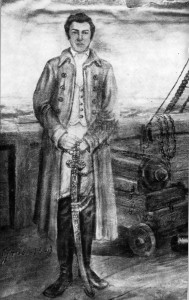
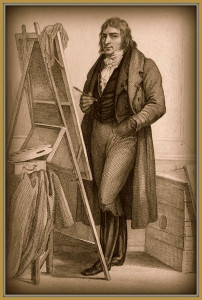
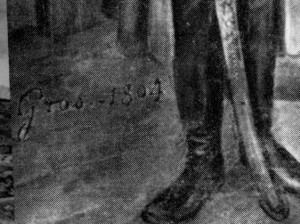
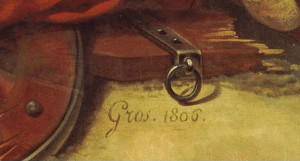
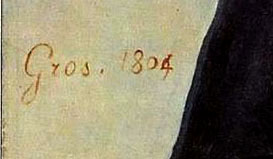
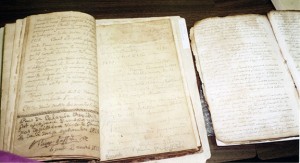
Recent Comments